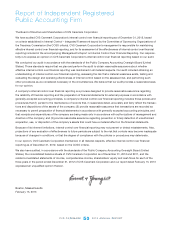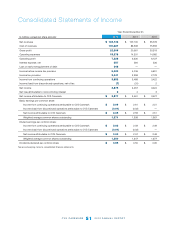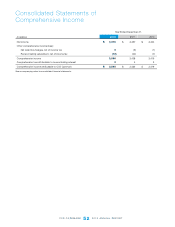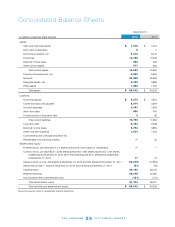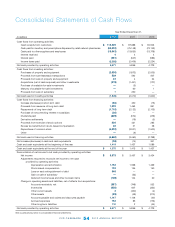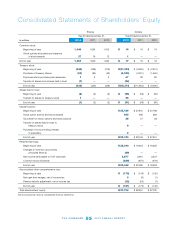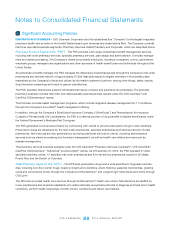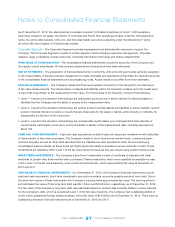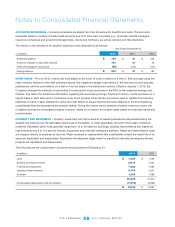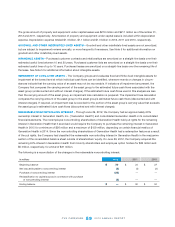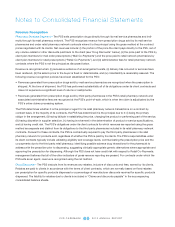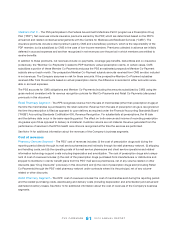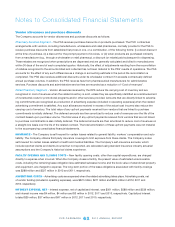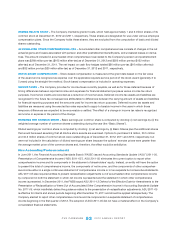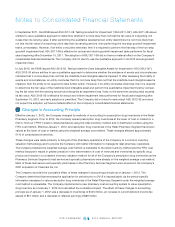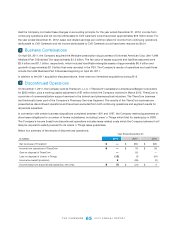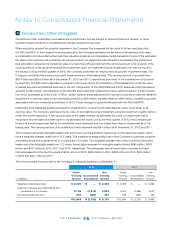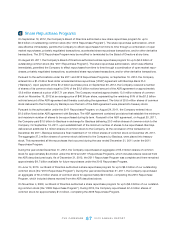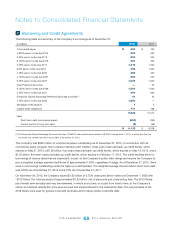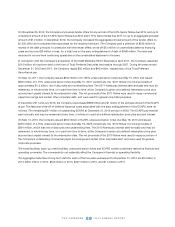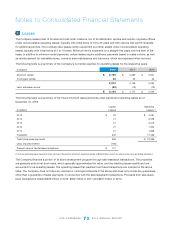CVS 2012 Annual Report Download - page 62
Download and view the complete annual report
Please find page 62 of the 2012 CVS annual report below. You can navigate through the pages in the report by either clicking on the pages listed below, or by using the keyword search tool below to find specific information within the annual report.CVS CAREMARK 2012 ANNUAL REPORT
60
Notes to Consolidated Financial Statements
Revenue Recognition
Pharmacy Services Segment –
The PSS sells prescription drugs directly through its mail service pharmacies and indi-
rectly through its retail pharmacy network. The PSS recognizes revenue from prescription drugs sold by its mail service
pharmacies and under retail pharmacy network contracts where it is the principal using the gross method at the contract
prices negotiated with its clients. Net revenues include: (i) the portion of the price the client pays directly to the PSS, net of
any volume-related or other discounts paid back to the client (see “Drug Discounts” below), (ii) the price paid to the PSS by
client plan members for mail order prescriptions (“Mail Co-Payments”) and the price paid to retail network pharmacies by
client plan members for retail prescriptions (“Retail Co-Payments”), and (iii) administrative fees for retail pharmacy network
contracts where the PSS is not the principal as discussed below.
Revenue is recognized when: (i) persuasive evidence of an arrangement exists, (ii) delivery has occurred or services have
been rendered, (iii) the seller’s price to the buyer is fixed or determinable, and (iv) collectability is reasonably assured. The
following revenue recognition policies have been established for the PSS:
• Revenuesgeneratedfromprescriptiondrugssoldbymailservicepharmaciesarerecognizedwhentheprescriptionis
shipped. At the time of shipment, the PSS has performed substantially all of its obligations under its client contracts and
does not experience a significant level of returns or reshipments.
• RevenuesgeneratedfromprescriptiondrugssoldbythirdpartypharmaciesinthePSS’sretailpharmacynetworkand
associated administrative fees are recognized at the PSS’s point-of-sale, which is when the claim is adjudicated by the
PSS’s online claims processing system.
The PSS determines whether it is the principal or agent for its retail pharmacy network transactions on a contract by
contract basis. In the majority of its contracts, the PSS has determined it is the principal due to it: (i) being the primary
obligor in the arrangement, (ii) having latitude in establishing the price, changing the product or performing part of the service,
(iii) having discretion in supplier selection, (iv) having involvement in the determination of product or service specifications,
and (v) having credit risk. The PSS’s obligations under its client contracts for which revenues are reported using the gross
method are separate and distinct from its obligations to the third party pharmacies included in its retail pharmacy network
contracts. Pursuant to these contracts, the PSS is contractually required to pay the third party pharmacies in its retail
pharmacy network for products sold, regardless of whether the PSS is paid by its clients. The PSS’s responsibilities under
its client contracts typically include validating eligibility and coverage levels, communicating the prescription price and the
co-payments due to the third party retail pharmacy, identifying possible adverse drug interactions for the pharmacist to
address with the prescriber prior to dispensing, suggesting clinically appropriate generic alternatives where appropriate and
approving the prescription for dispensing. Although the PSS does not have credit risk with respect to Retail Co-Payments,
management believes that all of the other indicators of gross revenue reporting are present. For contracts under which the
PSS acts as an agent, revenue is recognized using the net method.
Drug Discounts –
The PSS deducts from its revenues any rebates, inclusive of discounts and fees, earned by its clients.
Rebates are paid to clients in accordance with the terms of client contracts, which are normally based on fixed rebates
per prescription for specific products dispensed or a percentage of manufacturer discounts received for specific products
dispensed. The liability for rebates due to clients is included in “Claims and discounts payable” in the accompanying
consolidated balance sheets.


